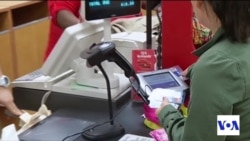Credit card debt in the United States is approaching $1 trillion, according to a study by CardHub.com, a company that tracks consumer financial issues.
If that figure isn't stark enough by itself, consider these, also from last month's Card-Hub study:
- In 2015 alone, credit card debt rose $71 billion; $52 billion came in the fourth quarter, mostly attributed to holiday shopping.
- That 4th quarter equaled credit card debt during the entire years of 2009, 2010 and 2011 combined.
- The average credit card debt is up to $5,700 per household. The average for balance-carrying, month-to-month households, is close to $16,000.
The United States is the world leader in credit card debt, according to statistics from the Census Bureau and the Federal Reserve Board. And not just by a little. U.S. credit card debt is more than double that of the United Kingdom. It almost equals credit card debt of the next six countries combined: France, Canada, Japan, Mexico, Russia and China.
Different strokes
One of the reasons the U.S. is world leader is the increasing use of credit cards by Americans, a practice they do not always share with other people in the world.
“Most people in Asia pay cash. So they don’t usually use credit cards, per se,” economics professor Anand Marri told VOA. ”My experience in India, for example, most people don’t use credit cards. They use cash."
Marri, who teaches at the Teachers College at New York’s Columbia University, added that in other Asian countries, the only way people get mortgages for their homes, is with cash.
WATCH: By the numbers: US credit card debt
There has been a recent move by banks to introduce more credit cards to the Indian population. A MasterCard representative, in a recent interview with VOA, said its business plan includes marketing its cards to emerging economies, moving those economies from cash to credit.
Banks also are heavily marketing the cards to U.S. customers.
“Banks are pushing credit card payments more and more with things like attractive rewards and bonuses," Robert Harrow, credit card analyst for ValuePenguin, a financial research company told VOA. "For every new customer that signs up and only uses the card for rewards, there are some who bite off more than they can chew and end up in debt.”
Worries about credit card debt
The debt is worrisome to some experts.
“It is something we need to keep an eye on if borrowing continues to grow rapidly,” Moody’s Analytics’ Scott Hoyt underscored in a report on credit card debt.
“The implications of rising credit card debt would similar to what happened in the recession, when consumers became overly leveraged,” Hoyt added.
Card-Hub reports evidence is mounting that credit card users are reverting to pre-downturn (pre-2008) bad habits.
While U.S. consumers were riding a wave of prosperity in the years before 2008, however, now they may be using credit cards just to keep up with expenses.
“My understanding,” Harrow said, “is that the cost of living in many big urban centers is outpacing the median salary. This is sure to cause many people to supplement their income with a credit card, thus driving credit card debt.”
Marri thinks personal crises may be driving credit card users to max out.
“A credit card user that’s maxed-out is probably someone that has middle income, that probably had some type of crisis that they’ve had to put on a credit card," he said. "I think it’s someone that may have been out of a job for a while, may have a financial crisis.”
Upside to increased card usage
Marri told about some recent research at Columbia that convinced him employment is a key to credit card debt.
“I give Americans a lot of credit. They are very smart citizens and I don’t think they would purposefully take on debt for the sake of debt," he said. "They know there is no such thing as a free lunch.”
There is evidence that consumers are aware of the dangers of credit card debt. The delinquency rate on credit card re-payment, at 2.17 percent, is close to the lowest it has ever been since data collection began in 1991.
In one published report, Steve Blitz, chief economist at ITG Investment Research, wrote that the increase is “just a signal that there’s more people working and consumers are not necessarily taking on more debt.”
Blitz added, “The willingness of an individual to increase their leverage is the ultimate vote of confidence in the economy.”









